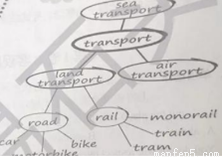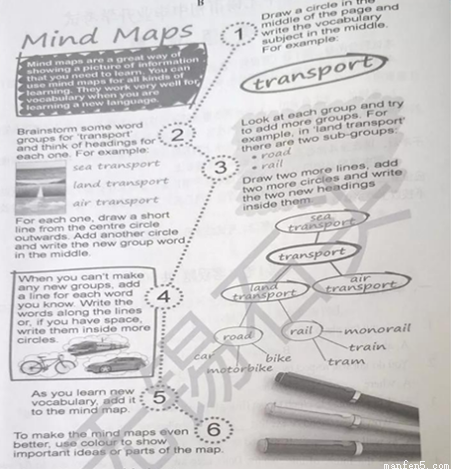
The air pollution in the small town is getting worse. People have to wear thick masks almost every day. __________ !
A. What a shame B. What shame C. What a surprise D. What surprise
A ΓΨΫβΈωΓΩΨδ“βΘΚ–Γ≥«’ρΒΡΩ’ΤχΈέ»Ψ‘Ϋά¥‘Ϋ―œ÷ΊΘ§»ΥΟ«ΦΗΚθΟΩΧλΕΦ“Σ¥ςΚώΚώΒΡΩΎ’÷ΓΘ’φ“≈ΚΕΘΓB,D±μ¥ο¥μΈσΘ§What a shame! ’φΩ…œßΘΓWhat a surprise! ΕύΟ¥Νν»Υ≥‘ΨΣΘΓΫαΚœ”οΨ≥Ω…÷ΣΘ§¥πΑΗΈΣAΓΘ Ϋπ‘Ω≥Ή ‘ΨμœΒΝ–¥πΑΗ
Ϋπ‘Ω≥Ή ‘ΨμœΒΝ–¥πΑΗ
| ΡξΦΕ | ΗΏ÷–ΩΈ≥Χ | ΡξΦΕ | ≥θ÷–ΩΈ≥Χ |
| ΗΏ“Μ | ΗΏ“ΜΟβΖ―ΩΈ≥ΧΆΤΦωΘΓ | ≥θ“Μ | ≥θ“ΜΟβΖ―ΩΈ≥ΧΆΤΦωΘΓ |
| ΗΏΕΰ | ΗΏΕΰΟβΖ―ΩΈ≥ΧΆΤΦωΘΓ | ≥θΕΰ | ≥θΕΰΟβΖ―ΩΈ≥ΧΆΤΦωΘΓ |
| ΗΏ»ΐ | ΗΏ»ΐΟβΖ―ΩΈ≥ΧΆΤΦωΘΓ | ≥θ»ΐ | ≥θ»ΐΟβΖ―ΩΈ≥ΧΆΤΦωΘΓ |
ΩΤΡΩΘΚ≥θ÷–”Δ”ο ά¥‘¥ΘΚΫ≠Υ’ ΓάΞ…Ϋ –2017-2018―ßΡξΑΥΡξΦΕœ¬―ßΤΎΧαΗΏΝΖœΑ”Δ”ο ‘Ψμ Χβ–ΆΘΚΒΞ―ΓΧβ
The computer needs ______. I think I need ______ to ask Mr Wang for help.
A. fixing; going B. fixing; to go C. to fix; going D. to fix; to go
B ΓΨΫβΈωΓΩΨδ“βΘΚΡ«Χ®ΒγΡ‘–η“ΣΈ§–όΓΘΈ“»œΈΣΈ“–η“Σ»Ξ«σ÷ζ”ΎΆθœ»…ζΓΘsth needs doing=sth needs to be done±μ ΨΓΑΡ≥Έο–η“Σ±ΜΓ≠Γ≠Γ±Θ§sb need to do sthΡ≥»Υ–η“ΣΉωΡ≥ ¬Θ§Ι ΒΎ“ΜΩ’”ΟΕ·Οϊ¥ fixingΘ§ΒΎΕΰΩ’”ΟΕ·¥ ≤ΜΕ® Ϋto goΘ§ Ι ―ΓBΓΘ≤ιΩ¥¥πΑΗΚΆΫβΈω>>
ΩΤΡΩΘΚ≥θ÷–”Δ”ο ά¥‘¥ΘΚΫ≠Υ’ ΓΗΏ” –2018ΫλΨ≈ΡξΦΕœ¬―ßΤΎ“ΜΡΘΩΦ ‘”Δ”ο ‘Ψμ Χβ–ΆΘΚ‘ΡΕΝΒΞ―Γ
I always felt sorry for the people in wheelchair. Some people, old and weak, cannot get around by themselves. Others seem perfectly healthy, dressed in business suits. But whenever I saw someone in a wheelchair, I only saw a disability, not a person.
One day, I fainted because of low blood pressure. It scared my parents. The doctor said that I must rest for a while. I agreed to take it easy but, as I stepped to the door, I saw my dad pushing a wheelchair in my direction! Feeling the color burn my face, I asked him to push that thing right back to where he found it.
I could not believe this was happening to me. Wheelchairs were fine for other people but not for me, as my father wheeled me out into the main street, people immediately began to treat me differently.
Little kids ran in front of me, forcing my father to stop the wheel chair suddenly. People looked down at me, pity in their eyes. Then they would look away, maybe because they thought the sooner they forgot me , the better they would feel.
ΓΑIΓ· m just like you!Γ± I wanted to scream. ΓΑThe only difference is youΓ·ve got legs, and I have wheels. Γ± But I had to taste the bitterness (Ά¥Ωύ) by myself.
People in wheelchairs are not different. They see every look and hear each word. Looking out at the faces, I finally understood: I was once just like them. I treated people in wheelchairs exactly the way they did not want to be treatedΘ°I realized it is some of us with two healthy legs who are truly disabled.
1.The author once ________ when she was healthy.
A. laughed at disabled people
B. took pity on the people in wheelchair
C. wished herself to sit in a wheelchair
D. saw some healthy people moving around in wheelchairs
2.The underlined word ΓΑfaintedΓ± in Paragraph 2 means _________.
A. Χ±ΜΨ B. ΩΒΗ¥ C. ‘ΈΒΙ D. ≥ω’ο
3.Facing the wheelchair for the first time, the author _______.
A. felt curious about it B. refused to accept it right away
C. thought it was ready for his father D. got ready to move around in it at once
4.The experience of the author tells us that ΓΑ_________Γ±.
A. Life is always the best teacher.
B. People often eat their bitter fruit.
C. DonΓ·t do to others what you donΓ·t want others to do to you.
D. Life is so changeable that nobody can know it until it happens.
1.B 2.C 3.B 4.C ΓΨΫβΈωΓΩ ‘ΧβΉς’ΏΜΙ «“ΜΗω’ΐ≥Θ»Υ ±Θ§ΥϊΩ¥Ήχ¬÷“ΈΒΡ≤–Φ≤»Υ ±ΒΡΡΩΙβ «Ν·ΟθΒΡΘ§ΒΪΉ‘ΦΚ≤ΜΨθΒΟ”– ≤Ο¥≤ΜΆΉΘΜΕχΒ±Ή‘ΦΚΉχ‘Ύ¬÷“Έ…œ ±Θ§»¥ΈόΖ®Ϋ” ή»ΥΟ«Ω…Ν·ΒΡΡΩΙβΓΘΉς’ΏΒΡ«Ή…μΨ≠άζΥΒΟςΝΥ“ΜΗωΈ ΧβΘΚΦΚΥυ≤Μ”ϊΘ§Έπ ©”κ»ΥΓΘ 1.ΗυΨίΕΧΈΡΒΎ“ΜΨδ I always felt sorry for the people in wheelchair.Ω…÷ΣΘ§Ής’ΏΫΓΩΒ ±Θ§Ά§«ιΉχ¬÷...≤ιΩ¥¥πΑΗΚΆΫβΈω>>
ΩΤΡΩΘΚ≥θ÷–”Δ”ο ά¥‘¥ΘΚΫ≠Υ’ ΓΗΏ” –2018ΫλΨ≈ΡξΦΕœ¬―ßΤΎ“ΜΡΘΩΦ ‘”Δ”ο ‘Ψμ Χβ–ΆΘΚΒΞ―ΓΧβ
Some passengers were waiting at the bus stop______ the whole roof fell down.
A. while B. when C. as soon as D. after
B ΓΨΫβΈωΓΩΨδ“βΘΚΒ±’ϊΗωΈίΕΞΒΙΥζ ±Θ§“Μ–©≥ΥΩΆ’ΐ‘Ύ≥Β’ΨΒ»≥ΒΓΘA. whileΒ±Γ≠ ±ΚρΘ§“ΐΒΦ ±ΦδΉ¥”ο¥”ΨδΘ§Ά®≥Θ±μ ΨΝΫΗωΕ·ΉςΆ§ ±ΖΔ…ζΘΜB. whenΒ±Γ≠ ±ΚρΘ§“ΐΒΦ ±ΦδΉ¥”ο¥”ΨδΘ§Ω…“‘±μ Ψ“ΜΗωΕ·ΉςΖΔ…ζ ±Θ§Νμ“ΜΗωΕ·Ής’ΐ‘ΎΫχ––Θ§ΖϊΚœ±ΨΧβΚ§“εΘΜC. as soon as “ΜΓ≠ΨΆΓ≠, “ΐΒΦ ±ΦδΉ¥”ο¥”ΨδΘΜD. after‘ΎΓ≠÷°ΚσΘ§“ΐΒΦ ±ΦδΉ¥”ο¥”ΨδΓΘΙ ―ΓΘΚBΓΘ≤ιΩ¥¥πΑΗΚΆΫβΈω>>
ΩΤΡΩΘΚ≥θ÷–”Δ”ο ά¥‘¥ΘΚ2018ΡξΫ≠Υ’ ΓΈόΈΐ –÷–ΩΦ”Δ”ο ‘Ψμ Χβ–ΆΘΚ‘ΡΕΝΒΞ―Γ
Mind Maps
Mind maps are a great way of showing a picture of information that you need to learn. You can use mind maps for all kinds of learning. They work very well for vocabulary when you are learning a new language.
1 Draw a circle in the middle of the page and write the vocabulary subject in the middle. For example:
transport
2 Brainstorm some word groups for Γ°transportΓ· and think of headings for each one. For example:
sea transport
land transport
air transport
For each one, draw a short line from the centre circle outwards. Add another circle and write the new group word in the middle.
3 Look at each group and try to add more groups. For example, in Γ°land transportΓ· there are two sub-groups;
Γώroad
Γώrail
Draw two more lines, add two more circles and write the two new headings inside them.
4 When you canΓ·t make any new groups, add a line for each word you know. Write the words along the lines or, if you have space, write them inside more circles.
5 As you learn new vocabulary, add it to the mind map.
6 To make the mind maps even better, use colour to show important ideas or parts of the map.


1.The instructions above mainly show us __________.
A. what mind maps are B. how to draw mind maps
C. what mind maps can do D. how to make mind maps better
2.What can we learn about mind maps?
A. Mind maps are usually started with a line.
B. Mind maps should be simple, with no colour.
C. A mind map is only used for language learning.
D. A mind map is a picture with useful information.
3.Which of the following shows the right order of making a mind map?
a. Draw a circle in the middle of the page.
b. Add new circles and write the group words Γ°seaΓ·, Γ°landΓ· and Γ°airΓ· in them.
c. Write Γ°transportΓ· in the middle of the circle.
d. Brainstorm some word groups for Γ°transportΓ·.
A. a-c-d-b. B. a-d-c-b C. d-a-c-b. D. d-a-b-c.
1.B 2.D 3.A ΓΨΫβΈωΓΩΕΧΈΡ÷ΊΒψΫι…ήΝΥΥΦΈ§ΒΦΆΦΒΡ÷ΤΉςΖΫΖ®ΓΘΥΦΈ§ΒΦΆΦ «’Ι ΨΈ“Ο«–η“Σ―ßœΑΒΡ–≈œΔΒΡ“Μ÷÷ΚήΚΟΒΡΖΫ ΫΘ§Έ“Ο«Ω…“‘ Ι”ΟΥΦΈ§ΒΦΆΦά¥Ϋχ––Ης÷÷―ßœΑΘ§Ε‘Έ“Ο«ΒΡ―ßœΑ”–Κή¥σΒΡΑο÷ζΓΘ 1.÷ς÷Φ¥σ“βΧβΓΘΗυΨίΕΧΈΡΥυΝ–ΨΌΒΡ6ΧθΩ…÷ΣΘ§ΕΧΈΡ÷ς“ΣΫι…ήΝΥΥΦΈ§ΒΦΆΦΒΡ÷ΤΉςΖΫΖ®ΓΘ¥πΑΗΈΣBΓΘ 2.œΗΫΎάμΫβΧβΓΘΗυΨίΒΎ“ΜΧθΓΑDraw a circle in the middle of the pa...≤ιΩ¥¥πΑΗΚΆΫβΈω>>
ΩΤΡΩΘΚ≥θ÷–”Δ”ο ά¥‘¥ΘΚ2018ΡξΫ≠Υ’ ΓΈόΈΐ –÷–ΩΦ”Δ”ο ‘Ψμ Χβ–ΆΘΚΒΞ―ΓΧβ
ΓΣItΓ·s said that drinking coffee __________ cancer. Do I have to give it up?
ΓΣRelax! Not everything on Wechat is true. In fact, a coffee a day keeps the doctor away.
A. causes B. has caused C. caused D. had caused
A ΓΨΫβΈωΓΩ Ψδ“βΘΚΓΣΓΣΨίΥΒΚ»ΩßΖ»Μα÷¬Α©ΓΘΈ“±Ί–κΖ≈ΤζΚ»ΩßΖ»¬πΘΩΓΣΓΣΖ≈Υ…–©ΘΓ≤Μ «Υυ”–ΒΡΝΡΧλΡΎ»ίΕΦ «’φ ΒΒΡΓΘ ¬ Β…œΘ§“ΜΧλΚ»“Μ±≠ΩßΖ»≤ΜΜα…ζ≤ΓΩ¥“Ϋ…ζΓΘdrinking coffeeΉς¥”ΨδΒΡ÷ς”οΘ§Κ»ΩßΖ»Μα÷¬Α©÷Μ «ΈΔ–≈÷–±π»ΥΒΡ“Μ÷÷ΥΒΖ®Θ§ ±Χ§”Ο“ΜΑψœ÷‘Ύ ±ά¥Οη ωΘ§Ι ¥πΑΗΈΣAΓΘ≤ιΩ¥¥πΑΗΚΆΫβΈω>>
ΩΤΡΩΘΚ≥θ÷–”Δ”ο ά¥‘¥ΘΚ…ΫΕΪ Γ«ζΗΖ –»ΥΫΧΑφΑΥΡξΦΕ”Δ”οœ¬≤α”οΖ®ΧνΩ’”κ‘ΡΕΝ±μ¥οΉ®ΝΖ Χβ–ΆΘΚ”οΖ®ΧνΩ’
I crossed the street to avoid 1. (meet) him, but he saw me and came running 2. me. It was no use pretending that I had not seen him, so I waved to him. I never enjoy meeting Nigel Dykes. He 3.has anything to do. No matter 4. busy you are, he always insists on coming with you. I had to think of a way5. preventing him from following me around all morning.
1.meeting 2.towards 3.never 4.how 5.of ΓΨΫβΈωΓΩ±ΨΈΡΫ≤ ωΝΥNigel Dykes.Ήή «ΗζΉ≈Έ“Θ§“ρ¥ΥΈ“≤ΜΒΟ≤Μœκ“ΜΗωΖΫΖ®Ήη÷ΙΥϊ’ϊΗω…œΈγΕΦΗζΉ≈Έ“ΓΘ 1.meeting Ψδ“βΘΚΈΣΝΥ±ήΟβ”ωΦϊΥϊΘ§Έ“¥©ΙΐΝΥ¥σΫ÷ΓΘavoid doing sth±ήΟβΉωΡ≥ ¬Θ§Ι ΈΣΕ·Οϊ¥ meetingΓΘ 2.towards Ψδ“βΘΚΒΪ «ΥϊΩ¥ΦϊΈ“Θ§...≤ιΩ¥¥πΑΗΚΆΫβΈω>>
ΩΤΡΩΘΚ≥θ÷–”Δ”ο ά¥‘¥ΘΚΫ≠Υ’ Γ’ρΫ≠ –«χ2018ΫλΨ≈ΡξΦΕ”Δ”οΕΰΡΘ ‘ΨμΘ®ΈόΧΐΝΠ≤ΩΖ÷Θ© Χβ–ΆΘΚΒΞ―ΓΧβ
ΓΣHow was your trip to the British Museum?
ΓΣI spoke no English and was _______ silent during the visit.
A. completely B. peacefully C. patiently D. carefully
A ΓΨΫβΈωΓΩΨδ“βΘΚΓΣΓΣΡψ»Ξ¥σ”Δ≤©ΈοΙίΒΡ¬Ο––‘θΟ¥―υΘΩΓΣΓΣΈ“≤ΜΫ≤”Δ”οΘ§‘ΎΖΟΈ ΤΎΦδΆξ»Ϊ≥ΝΡ§ΓΘΩΦ≤ιΗ±¥ ±φΈωΧβΓΘA. completelyΆξ»ΪΒΊB. peacefullyΚΆΤΫΒΊΘ§C. patientlyΑ≤Ψ≤ΒΊΘΜD. carefullyœΗ–ΡΒΊΓΘsilentΑ≤Ψ≤ΒΡΘ§–Έ»ί¥ –η”ΟΗ±¥ –ό ΈΘΜΗυΨίΨδ“β”οΨ≥Θ§Ω…÷Σ―ΓAΓΘ≤ιΩ¥¥πΑΗΚΆΫβΈω>>
ΩΤΡΩΘΚ≥θ÷–”Δ”ο ά¥‘¥ΘΚΫ≠Υ’ ΓΫ≠“θ –2018ΫλΨ≈ΡξΦΕœ¬―ßΤΎ ”Π–‘ΡΘΡβ≤β ‘”Δ”ο ‘Ψμ Χβ–ΆΘΚ‘ΡΕΝΒΞ―Γ
The meaning of silence varies among cultural groups. Silences may be thoughtful, or they may be empty when a person has nothing to say. A silence in a conversation may also show stubbornness, uneasiness, or worry. Silence perhaps viewed by some cultural groups as quite uncomfortable; therefore tries may be made to fill every gap Θ®ΦδœΕΘ© with conversation. Persons in other cultural groups value silence and view it as necessary for understanding a personΓ·s needs.
Many local Americans value silence and feel it is a basic part of communicating among people, just as some traditional Chinese and Thai persons do. Therefore, when a person from one of these cultures is speaking and suddenly stops, what perhaps shows is that the man wants the listener to consider what has been said before continuing. In these cultures, silence is a call for reflectionΘ®Ζ¥”ΠΘ©.
Other cultures may use silence in other ways, particularly when dealing with conflictsΘ®≥εΆΜΘ© among people or in relationships of people with different amounts of power. For example, Russian, French, and Spanish persons may use silence to show agreement between parties about the topic under discussion. However, Mexicans may use silence when instructions are given by a person in power rather than be rude to that person by arguing with him or her. In still another use, persons in Asian cultures may view silence as a sign of respect, especially to an elder or a person in power.
Nurses and other care-givers need to realize the possible meanings of silence when they come across the personal anxietyΘ®ΫΙ¬«Θ©their patients may be experiencing. Nurses should learn about their own personal and cultural situation of silence so that a patientΓ·s silence is not stopped too early or allowed to go on unnecessarily. A nurse who understands the curing value of silence can use this understanding to help in the care of patients from their own and from other cultures.
1.Which of the following people might regard silence as a call for careful thought?
A. The Chinese. B. The French. C. The Mexicans. D. The Russians.
2.What does the writer advise nurses to do about silence?
A. Let it continue as the patient pleases. B. Break it while treating patients.
C. Study its harm to patients. D. Make use of its healing effects.
3.What may be the best title for the text?
A. Sound and Silence B. What It Means to Be Silent
C. Silence to Native Americans D. Speech Is Silver; Silence Is Gold
1.A 2.D 3.B ΓΨΫβΈωΓΩ ΈΡ’¬¥σ“βΘΚ±ΨΈΡ «“ΜΤΣΩΤΫΧάύ‘ΡΕΝΘ§ΈΡ÷–÷ς“ΣΫ≤ΒΡ «≥ΝΡ§‘Ύ≤ΜΆ§ΒΡΈΡΜ·÷–Υυ¥ζ±μΒΡΚ§“εΓΘ 1.œΗΫΎάμΫβΧβΓΘΗυΨίΈΡ÷–ΒΡΨδΉ”just as some traditional Chinese and Thai persons do. Therefore, when a person from one of these cultures is spea...≤ιΩ¥¥πΑΗΚΆΫβΈω>>
ΑΌΕ»÷¬–≈ - ΝΖœΑ≤αΝ–±μ - ‘ΧβΝ–±μ
Κΰ±± ΓΜΞΝΣΆχΈΞΖ®ΚΆ≤ΜΝΦ–≈œΔΨΌ±®ΤΫΧ® | Άχ…œ”–ΚΠ–≈œΔΨΌ±®Ή®«χ | Βγ–≈’©Τ≠ΨΌ±®Ή®«χ | …φάζ Ζ–ιΈό÷ς“ε”–ΚΠ–≈œΔΨΌ±®Ή®«χ | …φΤσ«÷»®ΨΌ±®Ή®«χ
ΈΞΖ®ΚΆ≤ΜΝΦ–≈œΔΨΌ±®ΒγΜΑΘΚ027-86699610 ΨΌ±®” œδΘΚ58377363@163.com